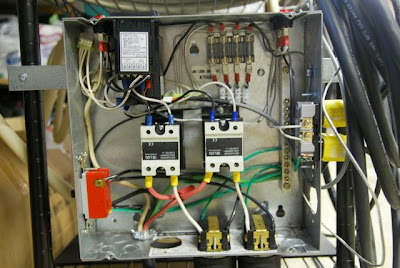Last brew session, my bk electric element failed right while I was sparging to the BK. Fortunately my HLT is closely identical to my BK and I was able to still finish my brew session.
I tested the voltage on my SSR and found that I was getting a full 119v on the connection to my element even when the PID was off. So I'm aware that it's not supposed to be this, but shouldn't the element still run at full 4500w 240? Or is the voltage slipping through but there amps are there to produce the proper wattage?
I'm ordering a new SSR but would love to get anyone's opinion or experience with SSR failure.
I tested the voltage on my SSR and found that I was getting a full 119v on the connection to my element even when the PID was off. So I'm aware that it's not supposed to be this, but shouldn't the element still run at full 4500w 240? Or is the voltage slipping through but there amps are there to produce the proper wattage?
I'm ordering a new SSR but would love to get anyone's opinion or experience with SSR failure.



